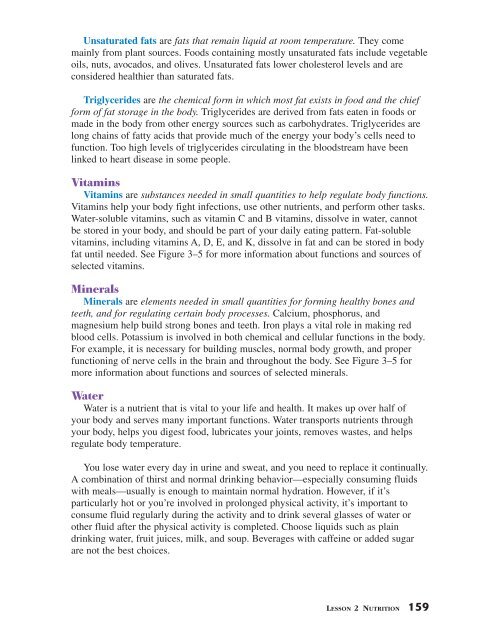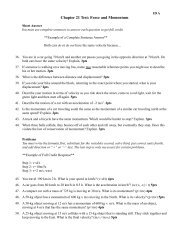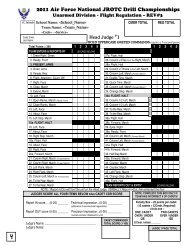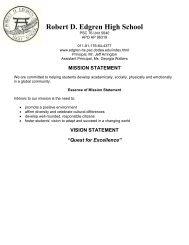AFJROTC Student Workbook CH03_Lesson_2 - Edgren High ...
AFJROTC Student Workbook CH03_Lesson_2 - Edgren High ...
AFJROTC Student Workbook CH03_Lesson_2 - Edgren High ...
You also want an ePaper? Increase the reach of your titles
YUMPU automatically turns print PDFs into web optimized ePapers that Google loves.
<strong>CH03</strong>_LE1 6/28/05 4:19 PM Page 159<br />
Unsaturated fats are fats that remain liquid at room temperature. They come<br />
mainly from plant sources. Foods containing mostly unsaturated fats include vegetable<br />
oils, nuts, avocados, and olives. Unsaturated fats lower cholesterol levels and are<br />
considered healthier than saturated fats.<br />
Triglycerides are the chemical form in which most fat exists in food and the chief<br />
form of fat storage in the body. Triglycerides are derived from fats eaten in foods or<br />
made in the body from other energy sources such as carbohydrates. Triglycerides are<br />
long chains of fatty acids that provide much of the energy your body’s cells need to<br />
function. Too high levels of triglycerides circulating in the bloodstream have been<br />
linked to heart disease in some people.<br />
Vitamins<br />
Vitamins are substances needed in small quantities to help regulate body functions.<br />
Vitamins help your body fight infections, use other nutrients, and perform other tasks.<br />
Water-soluble vitamins, such as vitamin C and B vitamins, dissolve in water, cannot<br />
be stored in your body, and should be part of your daily eating pattern. Fat-soluble<br />
vitamins, including vitamins A, D, E, and K, dissolve in fat and can be stored in body<br />
fat until needed. See Figure 3–5 for more information about functions and sources of<br />
selected vitamins.<br />
Minerals<br />
Minerals are elements needed in small quantities for forming healthy bones and<br />
teeth, and for regulating certain body processes. Calcium, phosphorus, and<br />
magnesium help build strong bones and teeth. Iron plays a vital role in making red<br />
blood cells. Potassium is involved in both chemical and cellular functions in the body.<br />
For example, it is necessary for building muscles, normal body growth, and proper<br />
functioning of nerve cells in the brain and throughout the body. See Figure 3–5 for<br />
more information about functions and sources of selected minerals.<br />
Water<br />
Water is a nutrient that is vital to your life and health. It makes up over half of<br />
your body and serves many important functions. Water transports nutrients through<br />
your body, helps you digest food, lubricates your joints, removes wastes, and helps<br />
regulate body temperature.<br />
You lose water every day in urine and sweat, and you need to replace it continually.<br />
A combination of thirst and normal drinking behavior—especially consuming fluids<br />
with meals—usually is enough to maintain normal hydration. However, if it’s<br />
particularly hot or you’re involved in prolonged physical activity, it’s important to<br />
consume fluid regularly during the activity and to drink several glasses of water or<br />
other fluid after the physical activity is completed. Choose liquids such as plain<br />
drinking water, fruit juices, milk, and soup. Beverages with caffeine or added sugar<br />
are not the best choices.<br />
LESSON 2 NUTRITION 159














